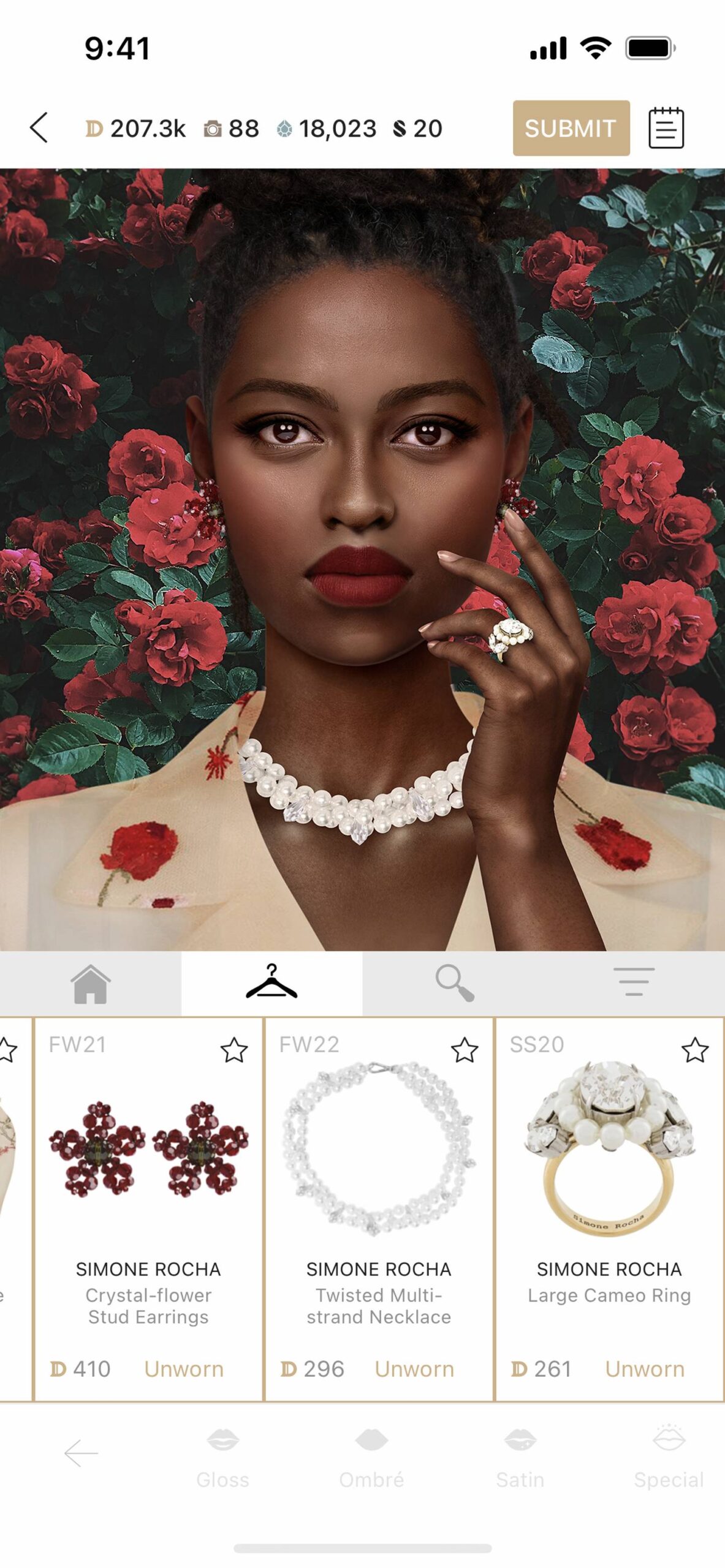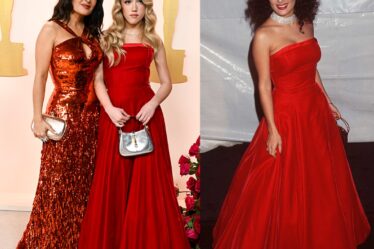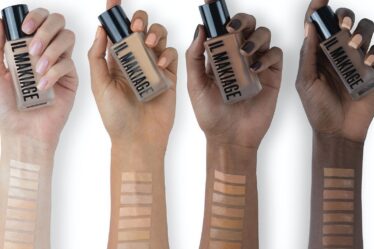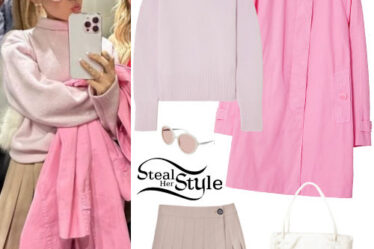
When the fashion styling game Drest debuted in 2019, video games were still foreign territory to many fashion brands. The few labels that had begun exploring the space, such as Louis Vuitton, Burberry and Nike, were exceptions rather than the rule.
That’s changed.
“Now I think everybody truly understands that there is an audience who they are only really going to connect [with] through these kinds of metaverse, gamified spaces,” said Lucy Yeomans, who prior to co-founding Drest was global content director at Net-a-Porter and editor-in-chief of Harper’s Bazaar UK.
Drest is by this point one of the veterans at the intersection of fashion and gaming, which in recent years has seen an influx of brands from Balenciaga to Alo Yoga. In the game, users complete challenges like styling a photoshoot around a Versace miniskirt or creating an editorial moodboard to score points and unlock rewards. You select the model, choose hair and makeup, decide on the backdrop location and pick accessories and clothing, which include pieces from numerous brands.
While Yeomans admits the company has faced some challenges along the way — specifically with its technology platform — it’s still marching ahead. On Wednesday it announced £15 million ($19.1 million) in new funding from the family office of co-founder and entrepreneur Graham Edwards.
It’s a sum that probably would have qualified as substantial when Drest launched but today looks more modest compared to the gaming investments brands are making.
The funds will go towards the eventual release of an expanded version Yeomans calls “Drest 2.0.” The update will add new social features, the ability to personalise your avatar and more narrative options, such as giving users a taste of the lavish trips brands gift VIP customers, influencers and editors. Yeomans got that last idea from her regular conversations with brands, who she said increasingly have teams focused on these sorts of events but for obvious reasons can’t scale them to the masses. The company also plans to finally introduce an Android version so it isn’t just available on Apple devices.
Next to a game like Fortnite, which has 500 million registered accounts, Drest remains tiny. The company declined to say exactly how many users it has but said since launch it’s seen 250 percent year-on-year growth in users and has worked with more than 260 brands, including Prada, Gucci, Fendi and Valentino. Brands will partner with the company to create challenges that can help to promote a new product or spread the word about a new creative director.
As a game, Drest takes a much different approach than many of the other mashups between fashion and gaming. Those have typically involved brands going into established games like Fortnite or Roblox and setting up elaborate branded experiences, like Gucci’s space in Roblox or Nike’s immersive new Air Max-themed world in Fortnite, where users run around collecting trinkets or performing other tasks. The gameplay has little to do with fashion, but Drest gamifies the act of putting a look together.
While the game is free to play, users can pay for access to more items they’re able to use in their photoshoots. You also gain more options as you keep styling and gain experience. At level two, you get access to a desert setting and a side lob hairstyle. At level four, a topiary garden and low side pony. Advancing in the game seems to be mostly a matter of completing challenges, which are entirely about putting together looks the user enjoys rather than skill manoeuvring a character through obstacles. Over the years, the game has also introduced more special features, like avatars of supermodels including Kate Moss and Natalia Vodianova.
Yeomans said players can become engrossed in the process of styling looks and might spend 20 minutes interacting with a handbag that’s at the centre of a challenge as they assemble looks around it, which is why she argues it’s a deeper form of engagement than scrolling past a product in an Instagram feed.
The idea for Drest came to Yeomans as she saw her nephews playing games and got invited herself on Facebook to play FarmVille. Gaming offered an opportunity to let more people, especially younger consumers, feel like they were participating in fashion’s cloistered industry.
“They seem like two such different worlds,” Yeomans said of fashion and video games. “But all I could see was the similarities, like focus on great storytelling, narrative progression, a little bit of competition [and] creativity.”
She was initially surprised by how open brands were to the idea of a fashion game, though it was often difficult finding the right person to speak to. Nobody was in charge of gaming activities and it was often the chief marketing officer she had to convince. Now more companies have people or teams devoted to gaming and digital ventures.
Fashion and gaming only look set to grow closer as companies like LVMH, Nike, Gucci and more establish new partnerships with gaming companies. Yeomans said one advantage she’s had is her fashion background, which allowed her to communicate with brands and understand how they want to be represented online. The company has been working to attract experts who could realise its vision on the technical side.
“There’s a myriad of challenges, but I think one of the pieces is just the fusion of the two cultures,” Yeomans said. “We really feel now that we have top talent from the gaming industry, top talent from the tech industry and now we have all the pieces in the puzzle to really take us to this next level.”



